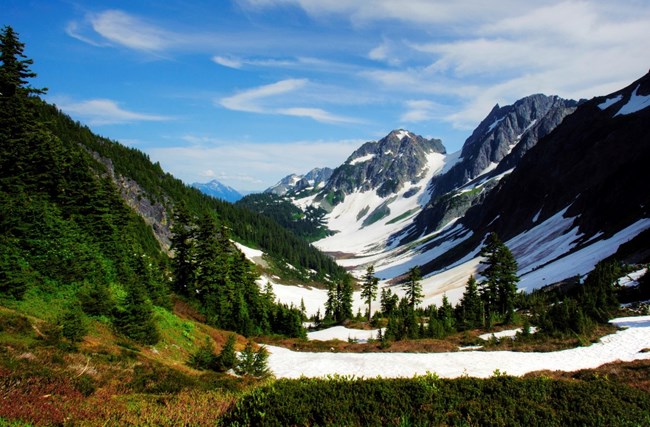Learn about NRCAs
The Natural Resource Condition Assessment (NRCA) Program provides framework, funding, and publishing support to parks to aid in the synthesis and documentation of natural resource conditions. Condition assessment reports are a tool to describe selected park resources, and record a snapshot of their current condition, identify trends, and identify potential or current threats and stressors. Understanding the condition and trend of natural resources is key for parks and NPS planners to appropriately prioritize and allocate stewardship resources.

Deby Dixon/NPS photo.
Because the Great Basin exhibits such drastic elevation changes from its valleys to its peaks, the region supports an impressive diversity of plant and animal species, from those adapted to the desert to those adapted to forest and alpine environments. In Great Basin National Park and the neighboring valleys alone, there are 11 species of conifer trees, 73 species of mammals, 18 species of reptiles, 238 species of birds, 8 species of fish, and over 800 species of plants.
Traditional NRCA Report: 2017
In an effort to better understand the natural resources and processes found within the park, a Natural Resource Condition Assessment was written and published in 2017. This project was a collaboration between the NPS, park staff, and NatureServe. This team chose to evaluate the condition of numerous indicators within four resource topics:
- Landscape resources |
||
- Upland resources and ecological integrity |
||
- Aquatic resources and ecological integrity |
||
- Future landscape conditions |
Seven of the indicators evaluated were considered to be in good condition: night skies, rock glaciers, water quantity/quality, montane riparian woodland, Bonneville cutthroat trout, cave/karst processes, and springs. Another seven indicators were rated as having conditions of moderate concern: air quality, viewsheds, fire regime, aspen-mixed conifer forests, invasive annual grasses, sagebrush steppe, and climate change effects. Only one indicator (bighorn sheep) was considered to have a condition of significant concern, and one resource (wild turkeys) was not assigned a condition score. Climate change has a number of potential effects on park resources and values that will require concentrated investment in monitoring over the upcoming decades. Managers and staff at Great Basin National Park will continue to work to protect the valuable natural resource found within its boundaries.
For other reports and natural resource datasets visit the NPS Data Store.
Source: NPS DataStore Collection 7765 (results presented are a subset). To search for additional information, visit the NPS DataStore.
Last updated: February 25, 2022
